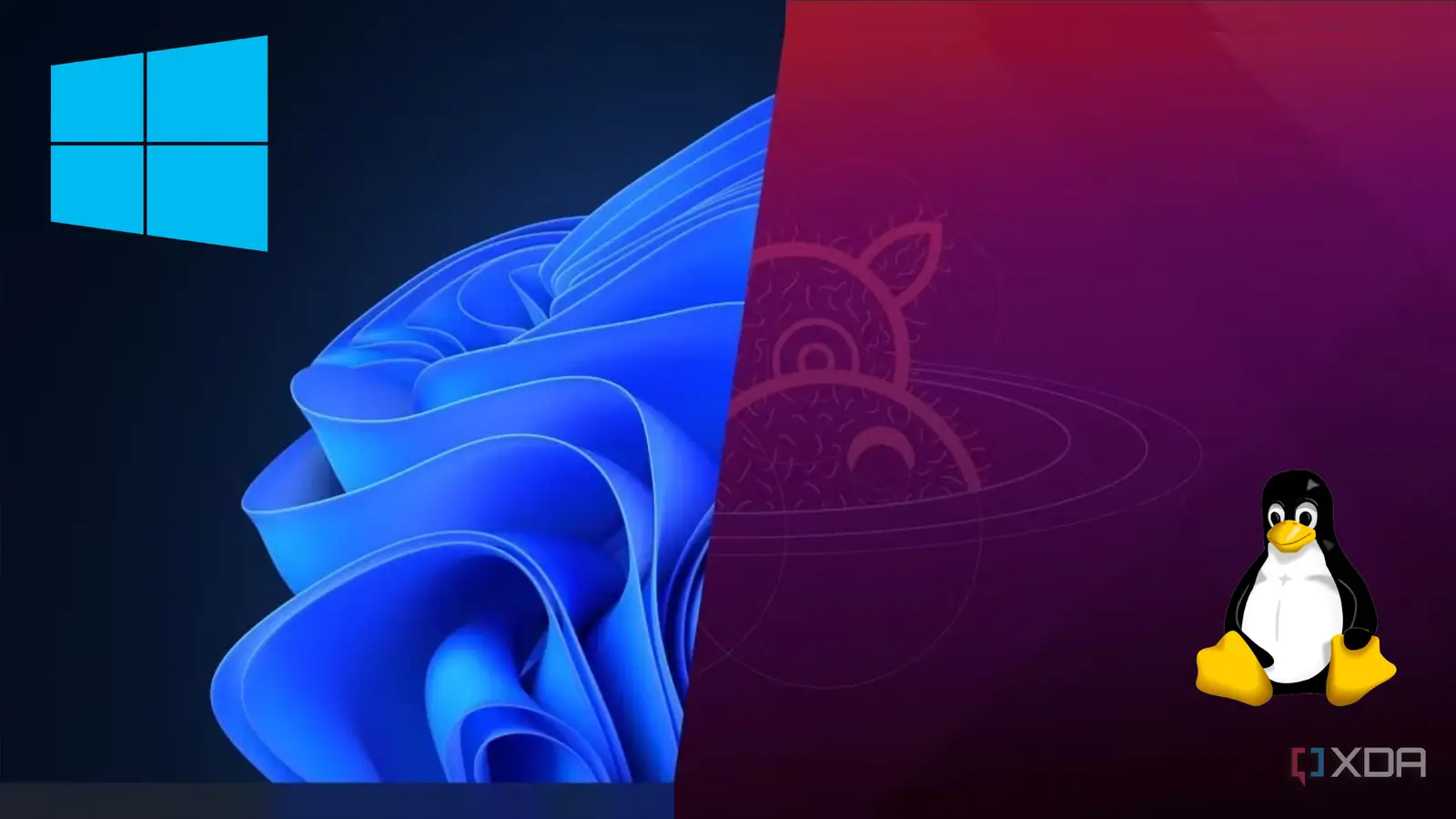Copyright XDA Developers

So a little while ago, I posted an article about moving from Windows to Linux and how I didn't really miss Windows. At the end, I mused that I may never actually delete my Windows partition, because I might need it. Well, fast-forward a week and a half, and Windows is now gone from my system. So, yeah, that didn't last long. That's not to say that Windows is gone gone. I made a full backup of it and slapped it on an external drive, so I could always bring it back if I wanted to. However, for the foreseeable future, I don't see myself returning to Microsoft's operating systems. Windows 10 just felt way too stale for me... The operating system died in more ways than one So, my original article went out a few days after the Windows 10 end-of-life date. At the time, I was fine about it, but then it slowly began to dawn on me that what I was using was all I was ever going to get. Sure, I was signed up for the extra year of updates, but those would only be security patches. There would be no new features, no new things to look forward to, nothing. Once that realisation hit, my desire to use Windows 10 fell even further than ever before. Which is pretty bad, because I could count on one hand the number of times I booted into Windows 10 in the five years since I discovered Linux. So things were already bleak ...meanwhile, Linux keeps treating me well No reason to be bored in the world of open-source software On the other hand, you have Linux. There are so many distros out there that just exploring new ones occasionally is really enjoyable for me. I had a bit of a distro tour where I tried Arch Linux, EndeavourOS, openSUSE, and others, and it was cool exploring what each one does and how others do things on the other side of the proverbial fence. At the end of my experimentation, I settled back on the distro that converted me in the first place: Fedora KDE Plasma. And, well, sticking with one Linux OS doesn't have to be boring, especially when you use a desktop environment that tries new things. I've recently updated my PC to Fedora Linux 43, and I'm chilling while the good folk over at KDE iron out the issues with their 6.5 release. That's not to say that the world of Linux is only about breakneck, bleeding-edge updates. There are distros out there that update at a glacial pace, so the people who use it won't wake up to find their operating system is going haywire thanks to a version update. I'm not very familiar with those, as I'm much more about grabbing the newest updates and changes ASAP; however, I do respect that others may not be as reckless and carefree as I am when it comes to system stability. Windows 10 had to die for my terrible, terrible decisions I'm sorry, little one That's cool and all, but why did I end up deleting Windows 10? Why didn't I leave the partition alone for when I wanted to use it again? Well, the thing is, I wanted to try dual-booting two Linux distros. I really love Fedora, but I wanted a separate partition for messing around with other distros. However, every time I got the urge to start my project, I remembered that doing so would likely corrupt the boot loader and/or my Windows partition, so I didn't do it. One day, I decided that enough was enough. I bundled Windows 10 into a full backup, nuked the partition, and now I have all of my SSD to play with. No worrying about making Windows unbootable. No more problems with Microsoft locking drives and files. Now I was truly free. The first thing I tried was dual-booting Fedora with Arch Linux. I manually set up Arch before, and it seemed easy enough to set up a dual-boot: I just had to create the Arch partition, boot into Fedora, and get GRUB to recognize it. Probably a 20-minute job. Then I corrupted my Fedora install and had to reinstall it from scratch. Oops. After that, I tried dual-booting Fedora with openSUSE. OpenSUSE seemed to install a second bootloader alongside my Fedora one, and I could switch between them in my BIOS boot menu, but I wanted them both to run on the same bootloader. I tried to find openSUSE on Fedora using os-prober. It found it, but couldn't add it to its GRUB. I tried doing it from Fedora. The same thing happened. I tried manually adding openSUSE to the Fedora GRUB. It wouldn't boot. Then the openSUSE GRUB seemed to eat itself, and I couldn't boot into it anymore. Oops, again. So, yeah. Windows 10 got deleted, so I could naively try dual-booting Linux, which turned out to be a lot tougher than I first imagined. Maybe a newbie like me should get some experience under their belt before trying to wrestle with GRUB. Or maybe I should keep everything backed up and break things again. Or both at the same time. It's Linux for me Despite Windows 10's demise and my messing up my Linux install, I really don't miss Microsoft's operating system. I like Fedora KDE Plasma too much, and I can see myself using it for years to come. Now that I've said that, I'll probably have an article written up next month about me finding a brand new one that I love even more. And you know what? That's just fine.



